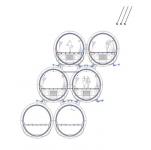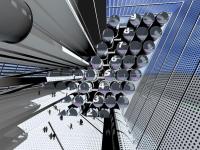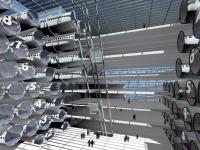Over 200 Boeing 727 and 737 fuselages are stacked in a north-south slant in relation to sun exposure for energy efficiency.
Two shifts in the direction of the main axis of the fuselages generate two large open spaces within the stack.
The building utilizes the space inside the fuselages to contain and organize functions that require enclosed spaces - such as book collections, meeting rooms and administration offices, - while the 2 large open spaces house a large atrium with all the reading areas on one side and two auditoriums on the other.
The library program is centered around the large glazed atrium, which develops vertically through the entire cross section of the building. The lower part of the atrium, located on the second level and accessible directly from the new plaza thru escalators and elevators, functions as a lobby and information center. At each upper level, the reading areas bridge between the two opposite interior facades generated by the cross sections of the fuselages that look onto the atrium.
A transparent LCD system is integrated in the atrium glazing and projects the library activities onto the new plaza expanding its presence on the outside with moving images and text.
The fuselages adjacent to the atrium are occupied by book collections, meeting rooms and technology centers. These cylindrical volumes envelope different activities insulating them from the main atrium and vice versa, and still maintaining a visual connection thru their glazed ends.
The fuselages that house the book collections offer an ampler space than the standard sizes generally assigned to this function.
Inside the fuselage, bookshelves run along either sides lining the entire fuselage and, in the middle, lower units combine shelving with seating and flat screens for a more direct local search of books and related digital information.
The fuselage is the only part of a decommissioned airplane that cannot be effectively recycled. The cost of its demolition exceeds the profit of aluminum resale. A huge amount of fuselages lays in the deserts of the western states. Boeing 727 and 737 are historically the most sold commercial planes and therefore the most common in these graveyards. They are sold at very low prices completely stripped and in great structural conditions.
The fuselage becomes the basic module of this building. It is insulated and furnished according to the program. The internal subdivision generated by the existing floor joists is used to respond to functional needs: the upper section is used for inhabitation while the lower one houses independent and interconnected mechanical systems: HVAC, electrical, cabling, and a conveyor belts network for the mechanical distribution of the books.
2005
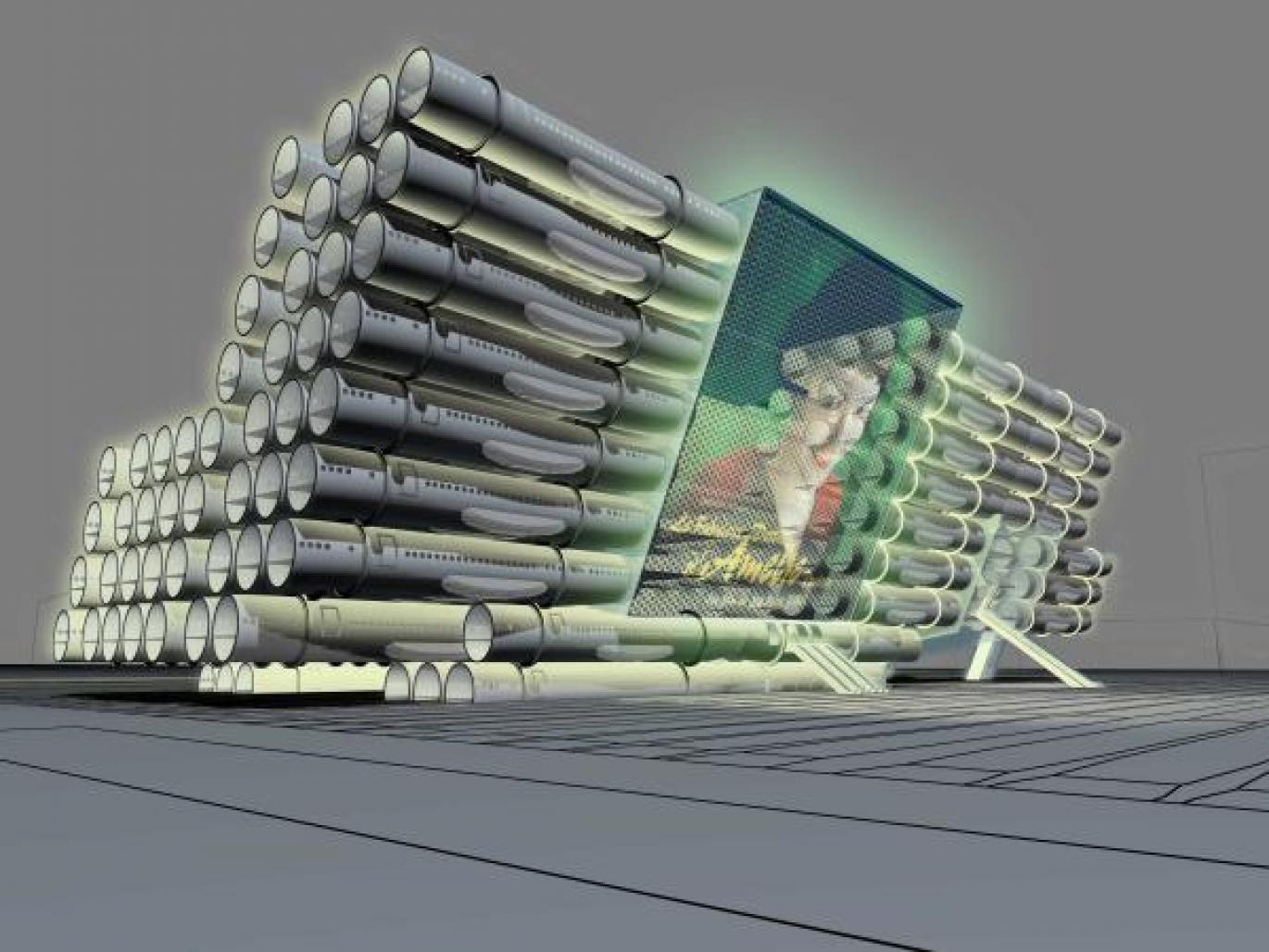

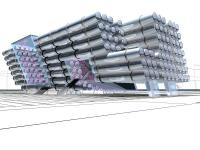
.jpg)

